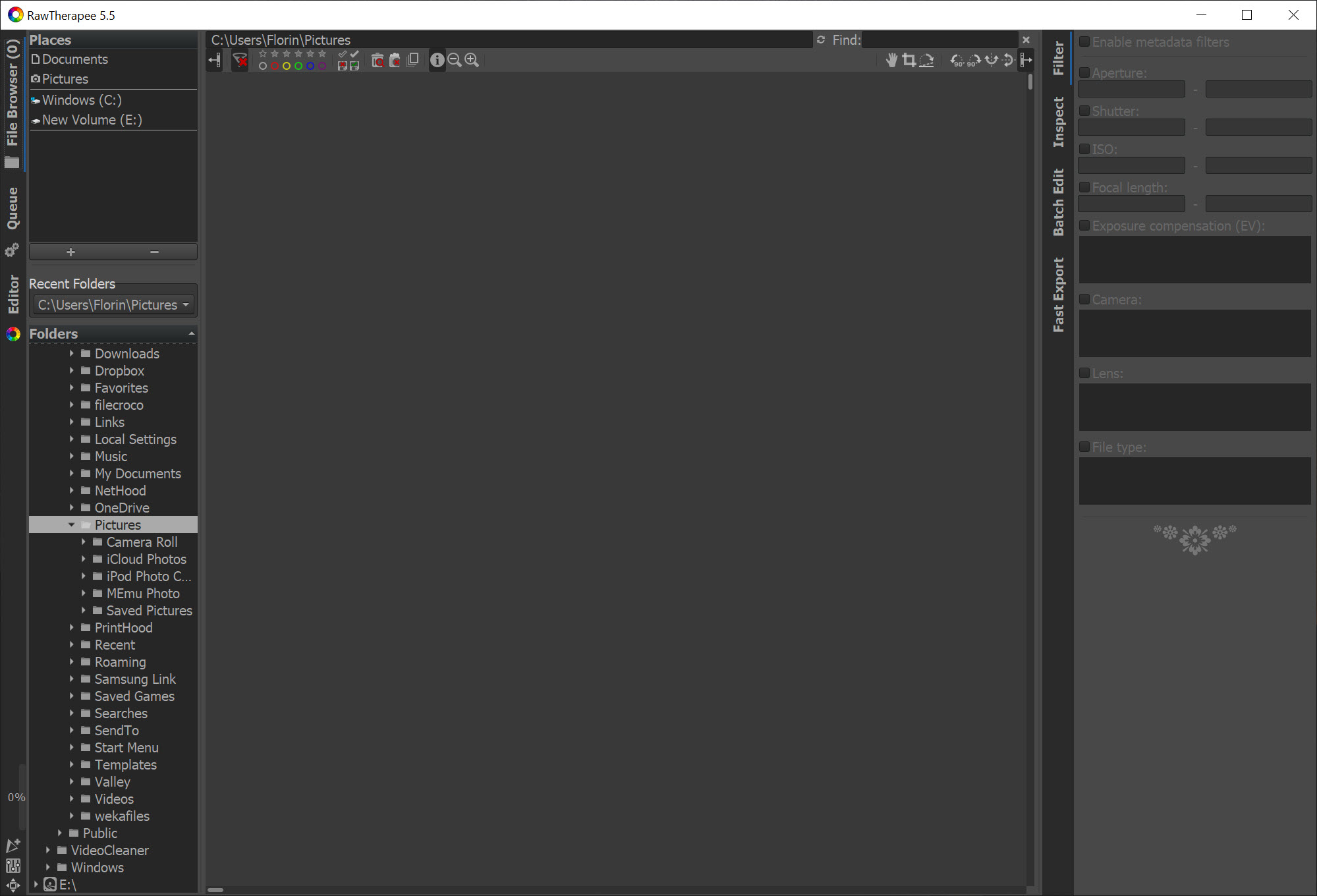

From that moment on, the photo's thumbnail is no longer based on the embedded JPEG but on the actual raw data. Since creating an image from raw data requires "cooking" it, and since you have not manually edited that image yet, RawTherapee uses parameters from the default processing profile for raw photos to process it. Once you open that photo in the Editor, RawTherapee creates a new thumbnail based on the actual raw data. When displaying a raw photo in the File Browser which has never been edited in RawTherapee before, the photo's thumbnail is based on the JPEG image embedded inside that raw file - the exact same image you see when viewing that photo on your camera or in most other software.

However, many photographers would like to use the "camera look" as a starting point for further adjustments, and RawTherapee makes this possible. Due to this fundamental fact of the data being "raw", there is no one correct way for a raw photo to look - the way your camera makes it look is not "the right way", nor is it the only way. Your camera cooks the raw data into a pretty image, which it stores as a JPEG file inside the raw file (yes, even when you're shooting in only "RAW" mode as opposed to "RAW+JPEG" mode). It must be "cooked" to look like the image you saw through the viewfinder. This sensor data does not look like a pretty image, in fact it does not look like anything - it is "raw" data, ergo the name. A raw photo contains a dump of sensor data, which makes up the bulk of the raw file. Then double-click on a raw photo to start editing it.įirst, a little background. Use the folder tree browser on the left of the File Browser tab to navigate to your raw photo repository and double-click on the folder to open it. You need to point RawTherapee to where your raw photos are stored. When you start RawTherapee you will land in the File Browser tab, and it might be empty. 8- Right-click context menu (you will typically use this to apply some processing profile to all selected files). 7- Sub-tabs of the File Browser: Filter (currently opened), Inspect (to see a full-sized embedded JPEG preview), Batch Edit (to apply some setting to all selected images) and Fast Export (low quality and bypasses some tools but fast saving - don't use this for typical saving!).

4- Filters to limit the thumbnails shown to only those which match some metadata or state. 3- Thumbnails of the currently opened folder. 2- Panels used for navigating to files and folders. RawTherapee in Single Editor Tab Mode - Vertical Tabs, showing: 1- Main sections: File Browser (currently opened), Queue, Editor and Preferences.


 0 kommentar(er)
0 kommentar(er)
